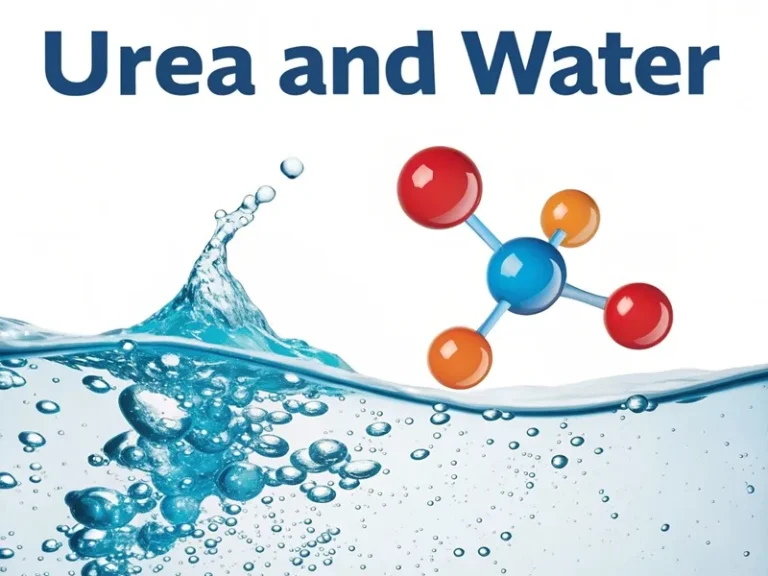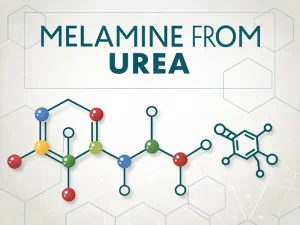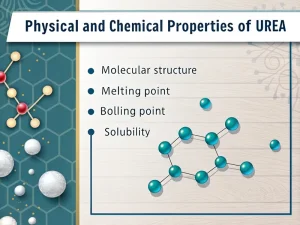
Urea VS Anhydrous Ammonia
Tech Blog urea vs anhydrous ammonia Nitrogen is the “lifeline” of crop growth, directly affecting leaf development, photosynthetic efficiency, and yield potential. For global farmers,


Urea (CO(NH₂)₂) and water (H₂O) form one of the most critical partnerships in industrial chemistry and biology. Their interaction governs processes from fertilizer efficiency to pollution control. This article explores the science behind urea-water systems and their real-world impact.
| Property | Value | Significance |
|---|---|---|
| Solubility | 1080 g/L (20°C) | Highest among nitrogen fertilizers |
| Heat of Solution | -57 kJ/mol (endothermic) | Cools surroundings on dissolution |
| Freezing Point | -11°C (30% solution) | Prevents crystallization in DEF fluid |
| Viscosity | 1.3 mPa·s (40% solution) | Ideal for spray applications |
Learn more about solubility of urea in water>>
Liquid Urea Fertilizers: Urea is dissolved in water to form aqueous solutions (e.g., UAN solutions: urea-ammonium nitrate) for spray application. These solutions offer uniform nutrient distribution. Reduced ammonia volatilization compared to granular urea.
Fertigation: Urea-water mixtures are applied through irrigation systems, integrating nutrient delivery with water management in crops like corn and soybeans.
Urea-Formaldehyde Resin Synthesis: Urea dissolves in water to react with formaldehyde, forming hydroxymethyl urea intermediates. The water acts as a solvent and regulates reaction temperature, enabling the production of adhesives for plywood and particleboard.
Textile Processing: Urea-water solutions are used as softeners and anti-static agents in fabric finishing, leveraging urea’s ability to plasticize fibers by absorbing moisture.
Eutrophication: Excess urea from agricultural fields can leach into water bodies, driving algal blooms and oxygen depletion. This is mitigated by:
Controlled-release urea formulations.
Precision agriculture to optimize application rates.
Ammonia Volatilization: In alkaline waters (pH > 7), urea hydrolysis releases ammonia, which is toxic to aquatic life. Aquaculture systems monitor water pH to prevent ammonia buildup.
Dust Inhalation: Handling dry urea can generate dust, which irritates the respiratory tract. Wetting urea with water reduces dust formation in industrial settings.
Corrosion: Concentrated urea-water solutions can corrode mild steel, necessitating stainless steel or plastic containers for storage and transport.
The interaction between urea and water is a testament to the power of hydrogen bonding and aqueous chemistry. From enabling life-sustaining nitrogen metabolism in organisms to fueling global agriculture and industrial innovation, this partnership drives processes essential to human survival and progress.
As we face challenges like water pollution and sustainable farming, understanding the nuances of urea’s behavior in water becomes increasingly vital. The story of urea and water exemplifies how fundamental chemical interactions shape both natural systems and technological solutions.

Tech Blog urea vs anhydrous ammonia Nitrogen is the “lifeline” of crop growth, directly affecting leaf development, photosynthetic efficiency, and yield potential. For global farmers,

Tech Blog melamine from urea Melamine is well-known for its wide range of applications, but its raw material for production is surprisingly urea. For manufacturers,

Tech Blog physical and chemical properties of urea Urea, with the chemical formula CO(NH2)2, is a simple organic compound that plays a central role in

JINGJIANG MELAMINE POWDER
© JINJIANG MELAMINE